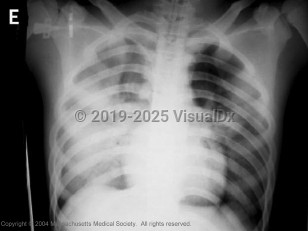Humans acquire avian influenza viruses primarily through direct contact of the mucous membranes with infectious secretions and excreta from infected birds or contaminated poultry products. The major portal of entry appears to be the upper respiratory tract. Although human-to-human transmission has been suggested in several household clusters, so far, there has been no sustained human-to-human transmission. Much remains to be learned about the exact mode of transmission. Most human illness from avian influenza has resulted from infection with Asian lineage H7N9 and H5N1 viruses, although there have been rare reports of human illness from H5N6, H5N2, H10N3, H9N2, and H3N8 strains.
Illness in humans from all bird flu virus infections is rare and has ranged in severity from no symptoms or mild illness to severe disease that resulted in death. Continued sporadic human infections are anticipated. In 2023 and 2024, there were several cases of human infection with HPAI A(H5N1) in Cambodia, including some deaths; all patients reportedly had a history of recent exposure to sick or dead poultry prior to their illness, with no indication of person-to-person spread. In November 2024, a human case of HPAI was reported in Canada; the infection was from a strain of the H5N1 virus circulating in wild birds. In 2025, sporadic human cases have occurred in Cambodia and India, including some deaths.
Human cases of H5N1 linked to 2024 outbreak among US dairy cows and poultry:
- HPAI in dairy cows was first reported in Texas and Kansas by the US Department of Agriculture on March 25, 2024, and has since been identified in herds across multiple states.
- Per the US Centers for Disease Control and Prevention (CDC), as of July 7, 2025, there have been 70 confirmed total reported human cases and 1 death in the United States across 13 states, with all but 5 reporting exposure to infected dairy cattle or poultry (2 cases of "other animal exposure" and 3 cases of "exposure source unknown"). There have been no cases reported in the United States since mid-February 2025.
- Some patients experienced only mild eye infection (conjunctivitis) without respiratory involvement. See Look For section for more information on clinical presentation.
- There has been no evidence of person-to-person spread.
- The risk to the general public remains low, but unpasteurized (raw) milk consumption should be avoided.
- House cats appear to be prone to severe illness and death from H5N1. Unpasteurized milk and raw food have been identified as a source of infection in cats.
Atypical presentations of avian influenza have been reported. Patients have developed nausea, vomiting, and diarrhea preceding acute respiratory failure. Progression to acute respiratory distress syndrome (ARDS) and respiratory failure is common. Complications have included bacterial sepsis, pulmonary hemorrhage, and multi-organ failure. The mortality rate of hospitalized patients has been high due to progressive respiratory failure.



